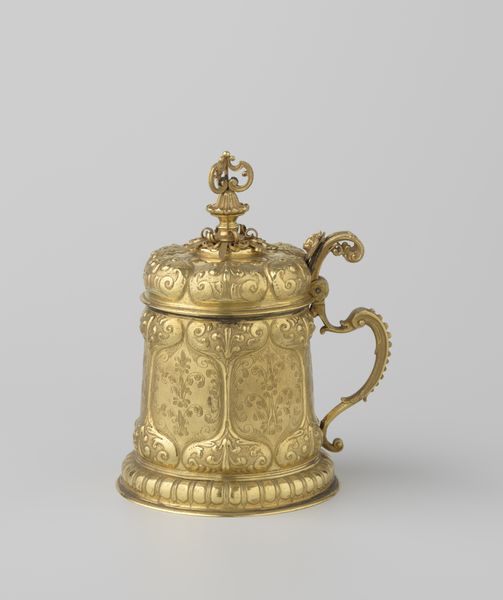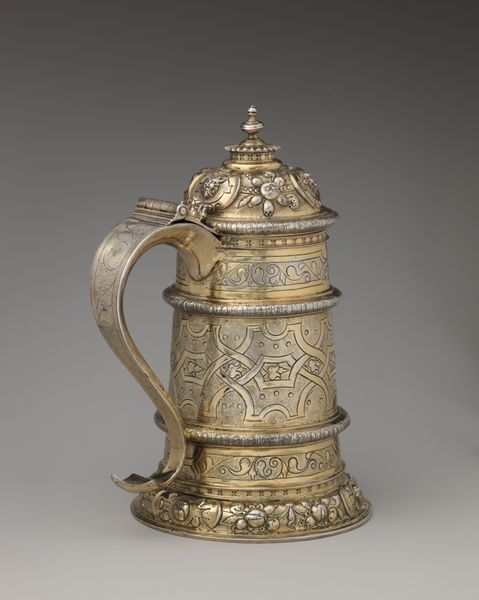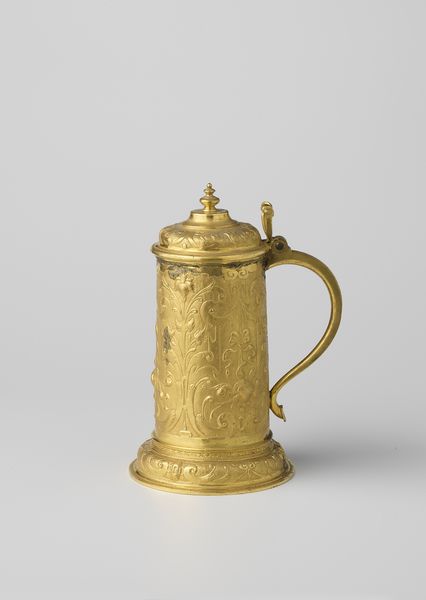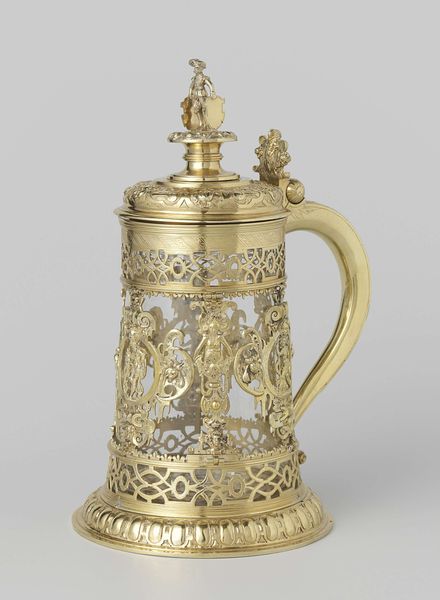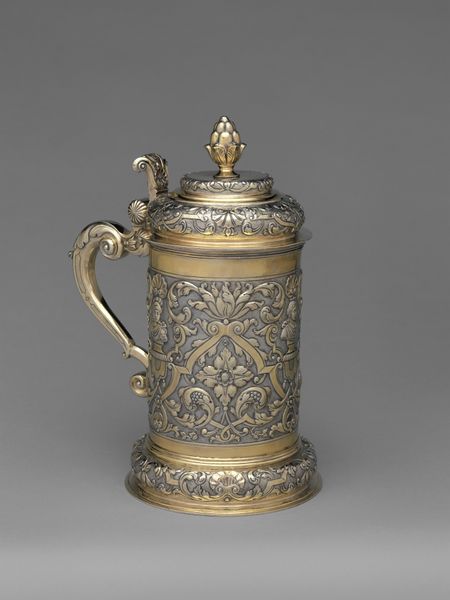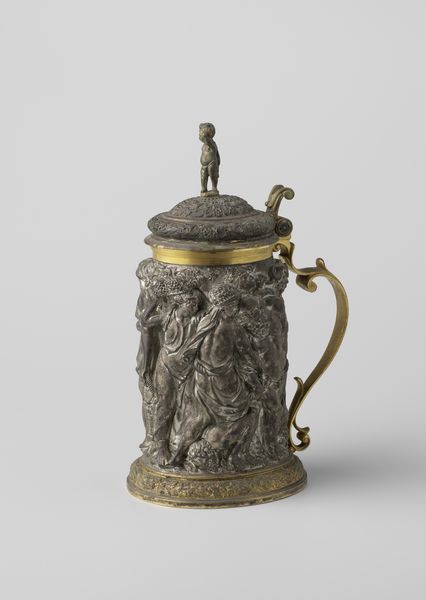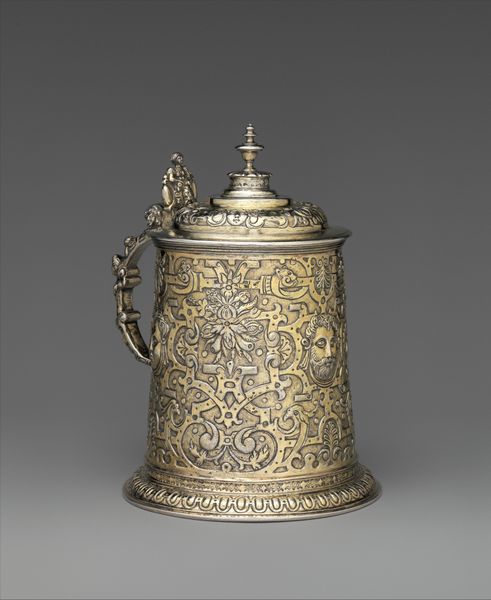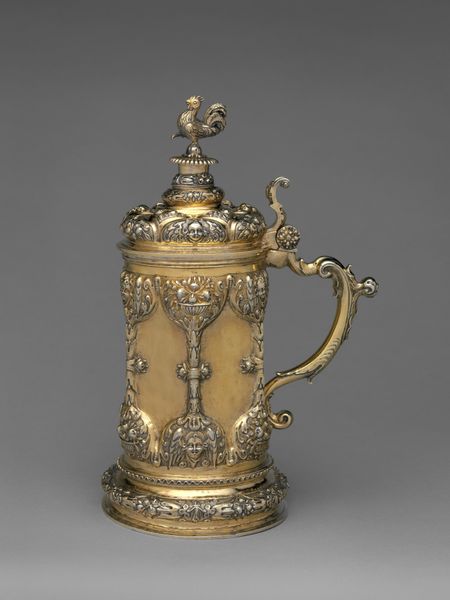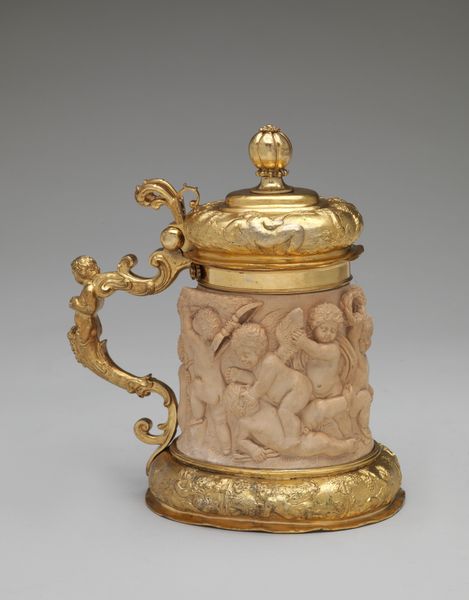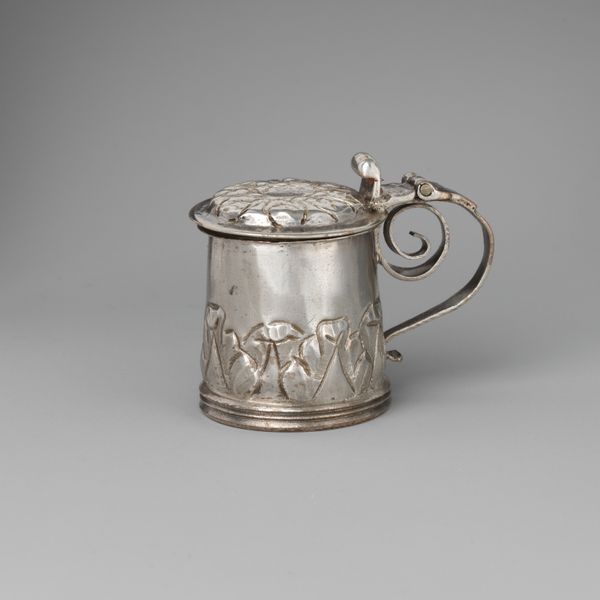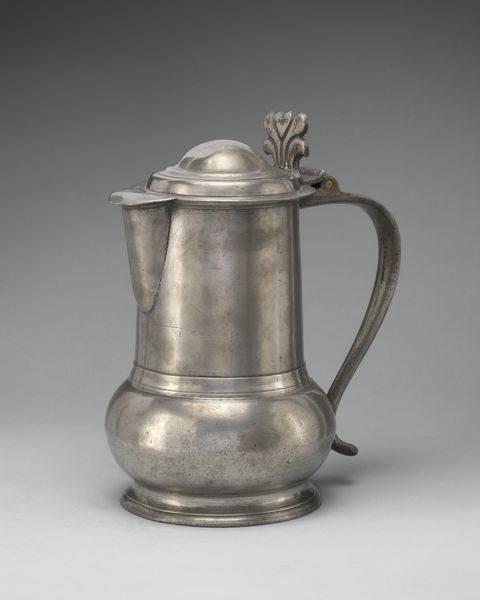
silver, metal, sculpture
#
portrait
#
medieval
#
silver
#
face
#
metal
#
sculpture
#
decorative-art
Dimensions: Height: 4 in. (10.2 cm)
Copyright: Public Domain
Abraham Riederer the Elder crafted this silver-gilt tankard, likely in Nuremberg, Germany, around the late 16th or early 17th century. The intricate ornamentation, including stylized foliage, masks, and geometric patterns, speaks to the cultural values of the rising merchant class. Such items signified status and wealth, embodying the era's embrace of luxury goods within the context of expanding trade networks. The decorative choices could have been influenced by the religious reformation, which saw wealth being directed into personal and domestic display, rather than solely religious institutions. The tankard also invites questions about the social rituals it served, reflecting the culture of communal drinking and male sociability. To fully understand this object, we need to research the socio-economic dynamics of Nuremberg during the late Renaissance, exploring guild records and sumptuary laws. The tankard's significance emerges not just from its aesthetic appeal, but from its place within a specific historical and cultural landscape.
Comments
No comments
Be the first to comment and join the conversation on the ultimate creative platform.
